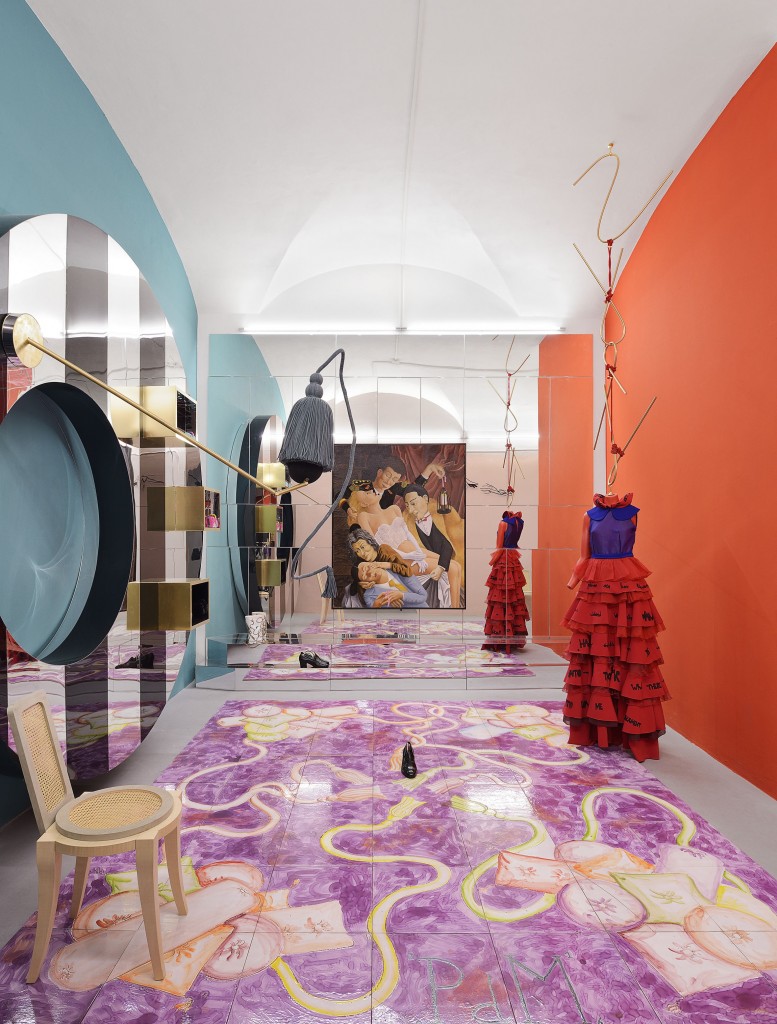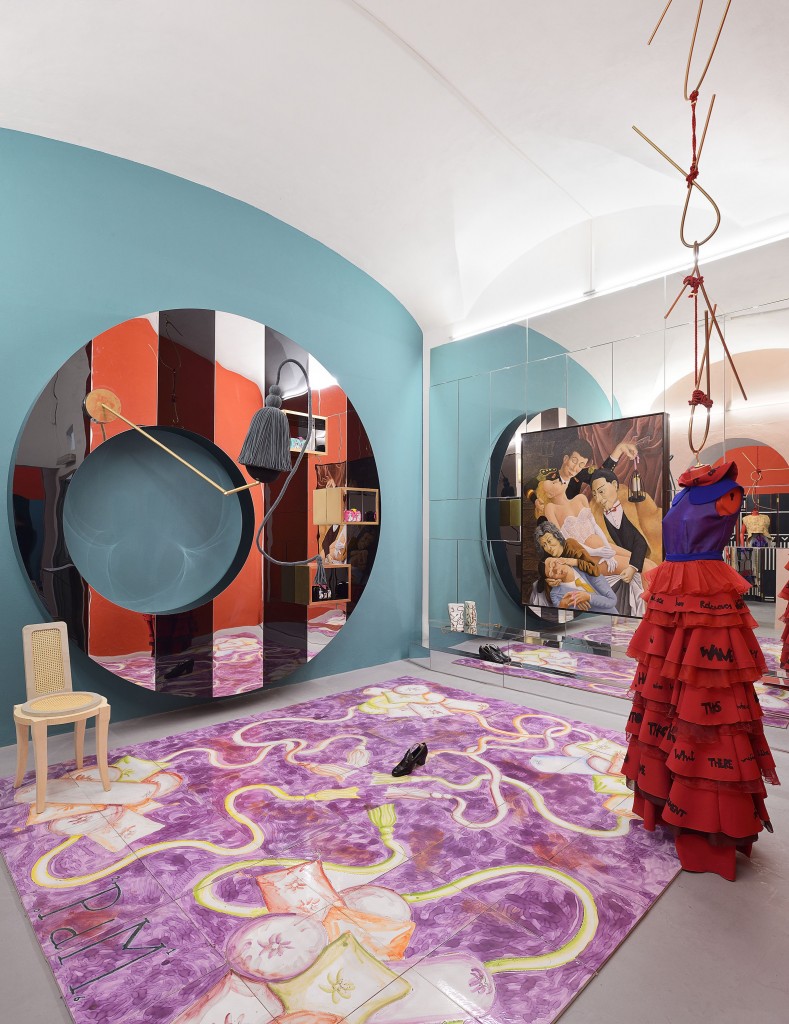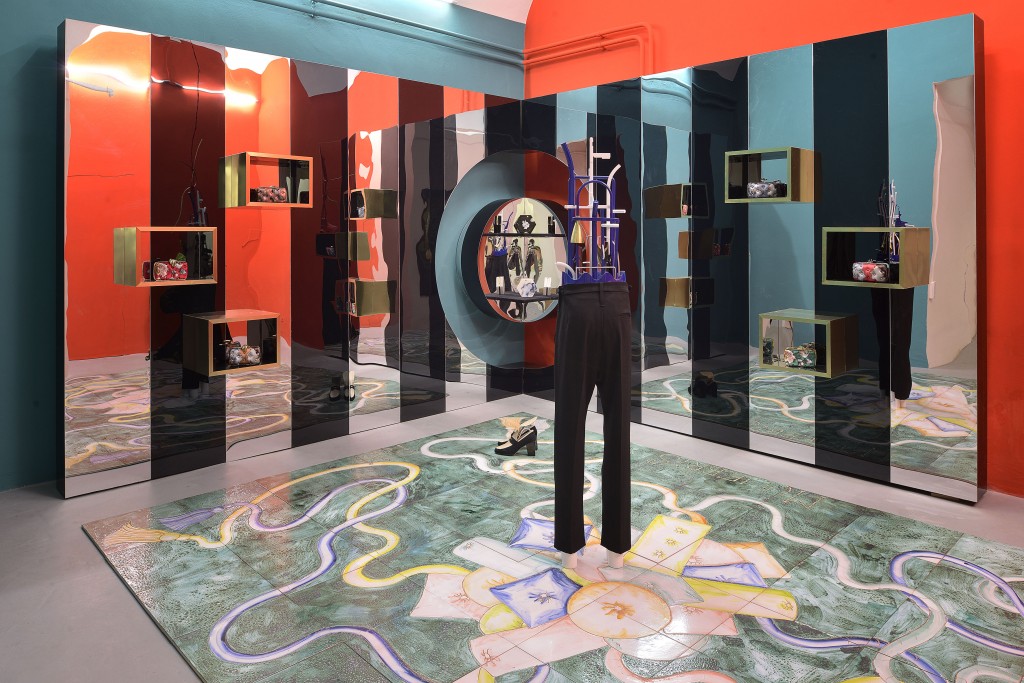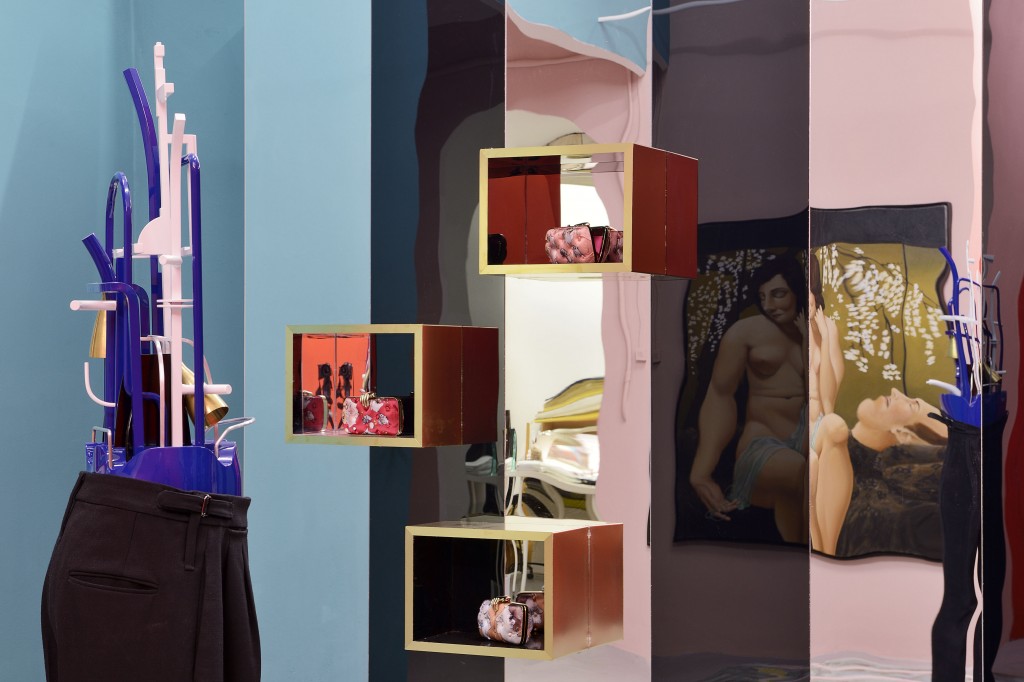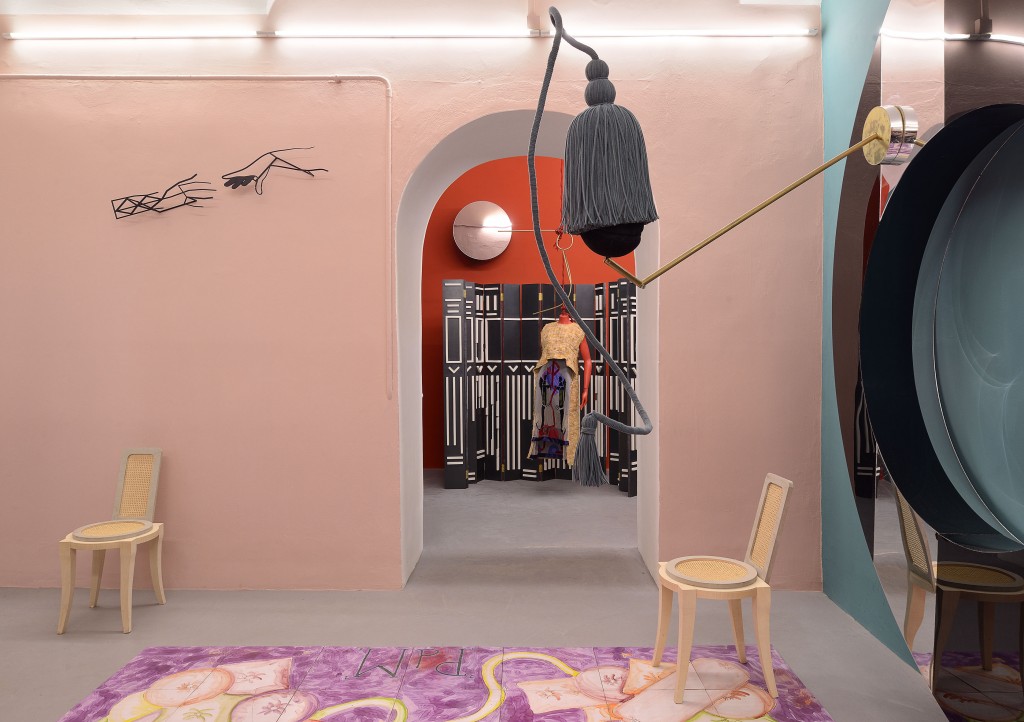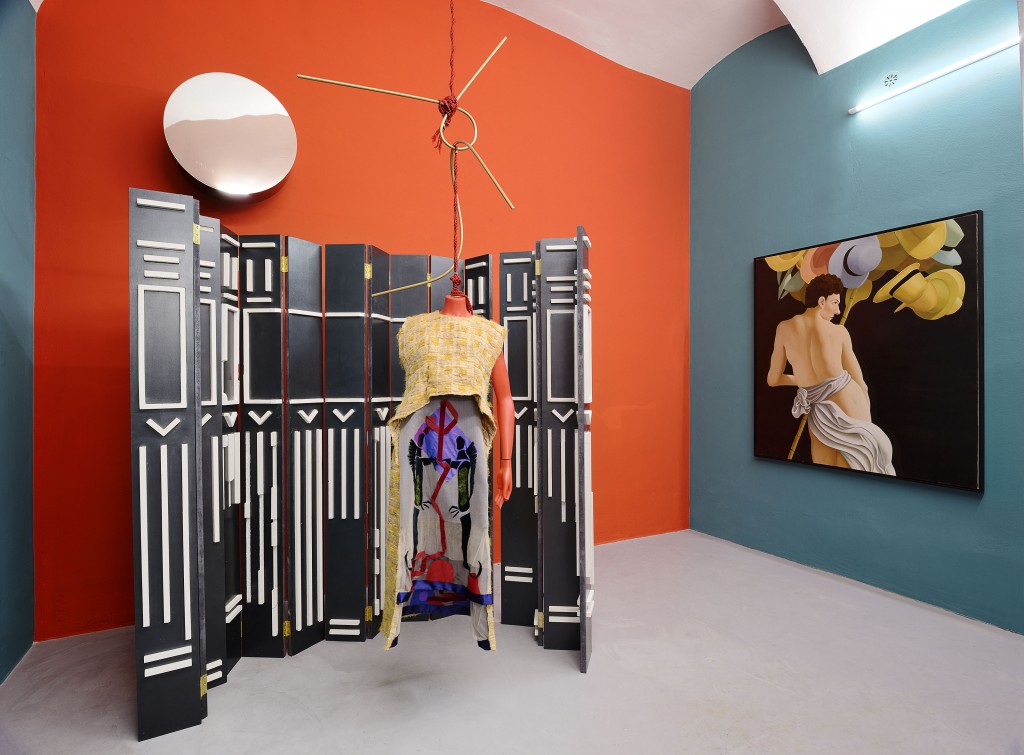Installation views
Photo Credits: Roberto Apa
p
p
THAN HUSSEIN CLARK
PATRIZIO DI MASSIMO
GEORGE HENRY LONGLY
curated by NICOLETTA LAMBERTUCCI
in dialogue with CURA.
Collaborators and Designers
Accademia Costume e Moda and STUDIO G.A.N (Gaia Fredella and Federica Anne Ducoli), Antica Manifattura Cappelli and Patrizia Fabri, Benedetta Bruzziches, Marini Calzature, Fabio Quaranta.
In his posthumously published book “Philosophical Investigations” (1953) Ludwig Wittgenstein gives his best-known explanation of the concept of Family resemblance. The Austrian-British philosopher argues that some words do not have a single essence that encompasses their definition. The word ‘game’ for instance does not have a definite meaning and no single aspect is common to all its uses. Not all games are played for recreation; games like football or tennis are played professionally, and some casino games are played out of addiction. The ways in which we commonly use and understand the word ‘game’ does not relate to a common feature of reality or to the thoughts behind them. In a similar way family members resemble each other not through a specific trait but a variety of traits that are shared by some, but not all, members of the family. In other words family members have a combination of common, or related, features rather than a rigorous single feature that appears in each member. For instance, four siblings in a family can be said to resemble each other, even though only three may share the same hair colour, three may share the same eye colour, only two may have similar facial structures and so on. No single feature is common to all members of the family, so the family cannot be defined as “having a green eyes” nor “having brown hair.” I can apply the family resemblance to MM, and particularly to the ways Than Hussein Clark, Patrizio Di Massimo and George Henry Longly individually chose to work collaboratively.
Collaboration is a relational opportunity that can easily become not only sterile, but simply a disaster. Although collaboration is a very efficient marketing strategy because it upgrades brand image and cuts the marketing cost by creating a new target, product, brand, and promotion through successful partnerships, if we look specifically at collaborations between fashion and art (a bond that goes back to Paul Poiret and Raoul Dufy, and Elsa Schiaparelli and Salvador Dalí) we see three main typologies: a) Artworks that appropriate fashion objects or icons removing the wearability and adding a sense of purposelessness (David Lynch and Laboutin) b) An artistic imaginary applied on a wearable product (Yasumasa Morimura x Issey Miyake) c) A performative approach towards the relationship of the two (Merce Cunningham x Rei Kawakubo). In recent years these typologies have often been mixed so that artistic branding was carefully placed onto an existing brand: artists have translated their work into industrially manufactured and globally distributed products. Within MM all the above possibilities have been tackled and experimented. Ultimately, functionality and purposelessness play the game of offering each other the chance to get a more profitable way of existence through collaboration.
The capacity of someone’s collaboration is equally commensurate to his or her ability to give, and as such of bringing things into the world, producing images of the self. In a magnificent letter from 1990, Gianni Versace writes: “So many people hide themselves behind their clothes. The Mafioso dresses up as Signore with tie, shirt and a jacket. Others hide behind a cassock. So many people conceal their inclinations behind a fake façade. Each and everyone of us should instead be who he or she truly is.” The works produced for MM are products, telling a story of cheeky fantasies and desires in a context that makes them schizophrenic characters.
MM is the image of the acronym for Mundus Muliebris, which in Latin can be translated as ‘ornaments.’ When googling the word ornament the first definition that comes up reads: “A thing used or serving to make something look more attractive but usually having no practical purpose.” Which brings me back to that slippery relationship between art and fashion: purpose vs purposelessness. An ornament has both. That limbo of grace is precisely what the identity of our brand MM is.
Than Hussein Clark worked with the duo GAN (Federica Ducoli and Gaia Fredella) in the production of gowns dedicated to Tennessee Williams. Than also entrusted Marini a design of two pairs of shoes for Valentino and Renato Balestra. Marini is a historical shoemaker workshop and boutique founded in 1899, that has been doing hand made shoes for the likes of the king of Morocco Hassan II, Sergio Leone, Anna Magnani, Solomon Guggenheim. Valentino and Balestra’s well-known rivalry makes the designed shoes the alter ego of the characters, shouting at each other that taste isn’t cheap.
Patrizio Di Massimo walked on both a classic and an unconventional path. With bag designer Benedetta Bruzziches, he created new patterns and fabrics for her signature bag ‘Carmen’. Patrizio also continues his recent experimentations with ceramic, and produced unique, hand painted ceramic bags.
Under the experienced and capable hands of Patrizia Fabri, hat designer and owner of the Antica Cappelleria in Rome, Patrizio transferred one of his most recognizable feature-object into a wearable sculpture.
George Henry Longly continues his long-term research in marketing, branding and museology and presents new works encompassing milled body parts and a specific use of industrial materials. He is introducing a new character: a mannequin, a convoluted machine, a contemporary disembodied relic that incorporates the minimal, exquisite and monochrome style of designer Fabio Quaranta.
The essence of an object gives meaning to the word used to name that very object, but what happens when the meaning is a relational scrutiny? The three artists are performing what Wittgenstein would call a family resemblance. For Wittgenstein, this is how ‘game’ and many other words have a consistent meaning. Common features of games, like recreation, scores, teams, rules, etc. are present in various games and not others, but the general overlapping mesh of these features is where the word gets its true meaning. Thus, the meaning of some words is a relation much like family resemblance. I wanted MM to be this kind of relation: my own family resemblance.
BASEMENT ROMA
Via Nicola Ricciotti, 4
00195 Roma
www.curamagazine.com
April 27 – June 17, 2016
A SPECIAL THANKS TO
Arts Council of England
THANKS TO
Nicoletta Fiorucci
AND TO
Altaroma
Studio_Leigh
Overdrive art
WE DRINK
Menabrea
Milanosake
